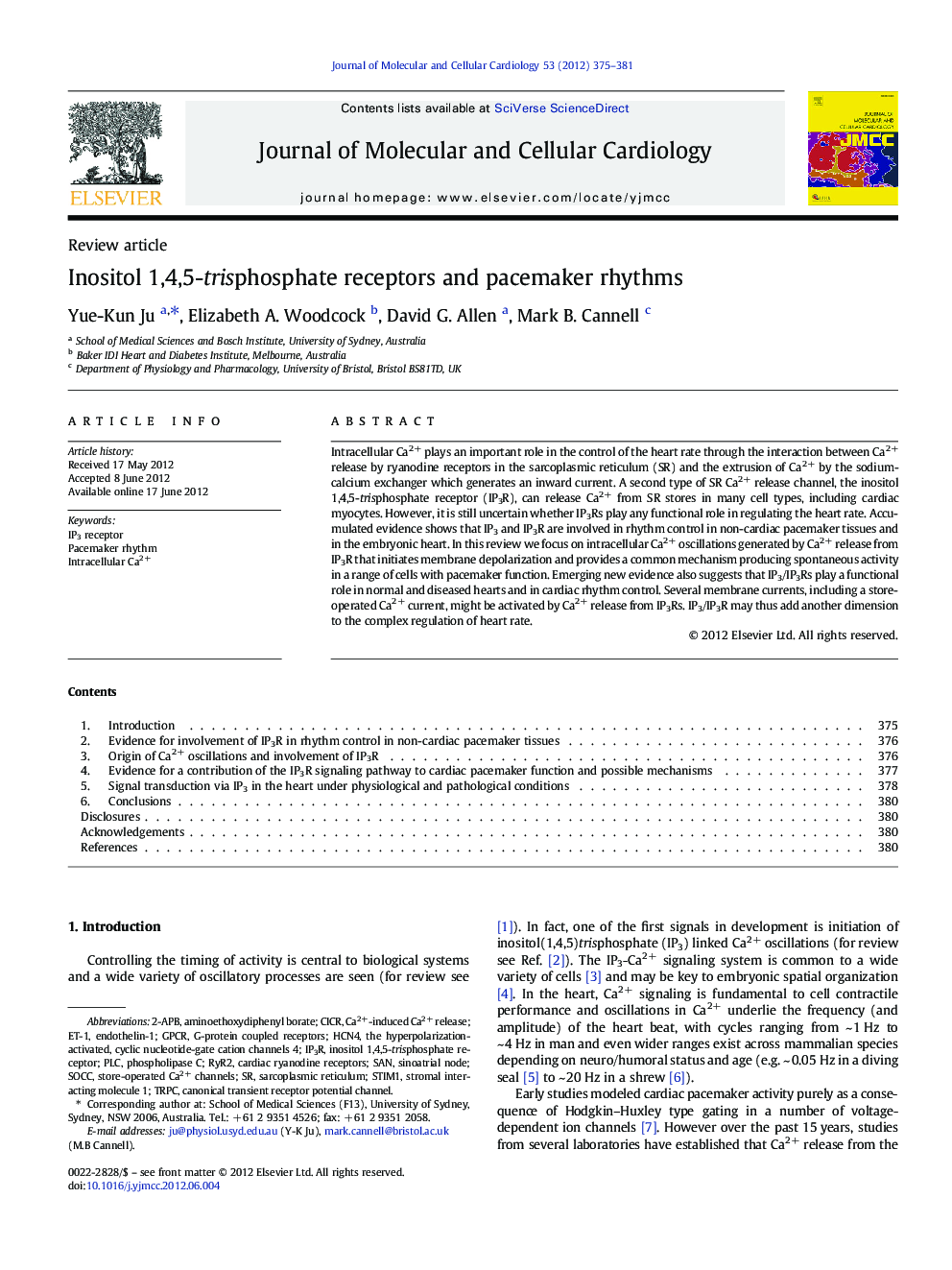| Article ID | Journal | Published Year | Pages | File Type |
|---|---|---|---|---|
| 10953901 | Journal of Molecular and Cellular Cardiology | 2012 | 7 Pages |
Abstract
Intracellular Ca2+ plays an important role in the control of the heart rate through the interaction between Ca2+ release by ryanodine receptors in the sarcoplasmic reticulum (SR) and the extrusion of Ca2+ by the sodium-calcium exchanger which generates an inward current. A second type of SR Ca2+ release channel, the inositol 1,4,5-trisphosphate receptor (IP3R), can release Ca2+ from SR stores in many cell types, including cardiac myocytes. However, it is still uncertain whether IP3Rs play any functional role in regulating the heart rate. Accumulated evidence shows that IP3 and IP3R are involved in rhythm control in non-cardiac pacemaker tissues and in the embryonic heart. In this review we focus on intracellular Ca2+ oscillations generated by Ca2+ release from IP3R that initiates membrane depolarization and provides a common mechanism producing spontaneous activity in a range of cells with pacemaker function. Emerging new evidence also suggests that IP3/IP3Rs play a functional role in normal and diseased hearts and in cardiac rhythm control. Several membrane currents, including a store-operated Ca2+ current, might be activated by Ca2+ release from IP3Rs. IP3/IP3R may thus add another dimension to the complex regulation of heart rate.
Keywords
Related Topics
Life Sciences
Biochemistry, Genetics and Molecular Biology
Cell Biology
Authors
Yue-Kun Ju, Elizabeth A. Woodcock, David G. Allen, Mark B. Cannell,
